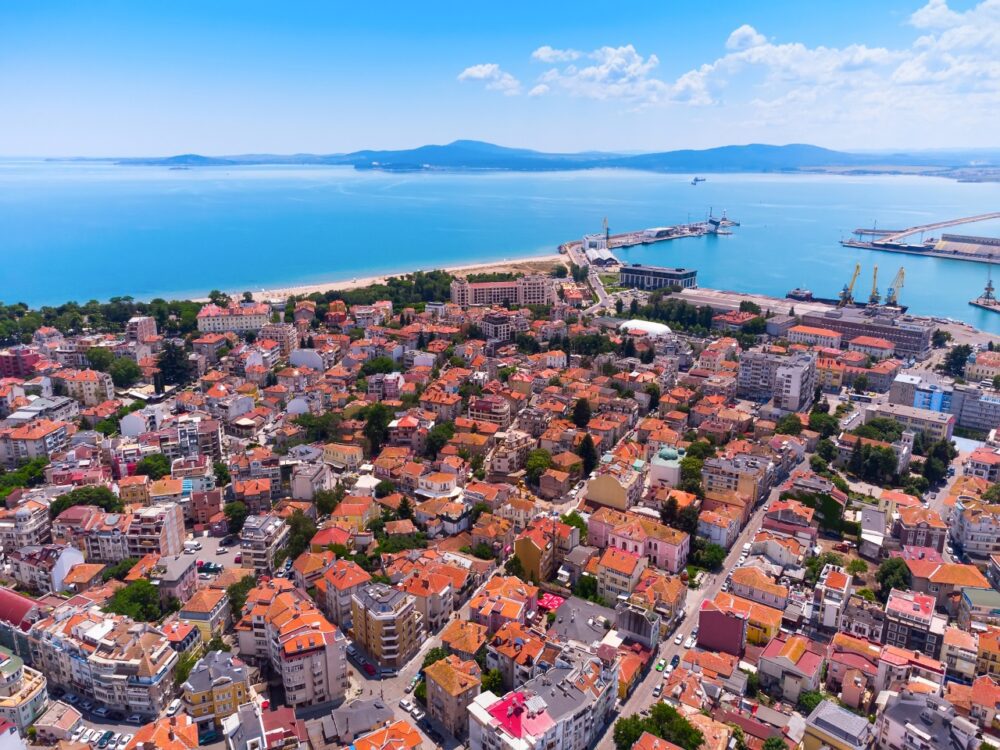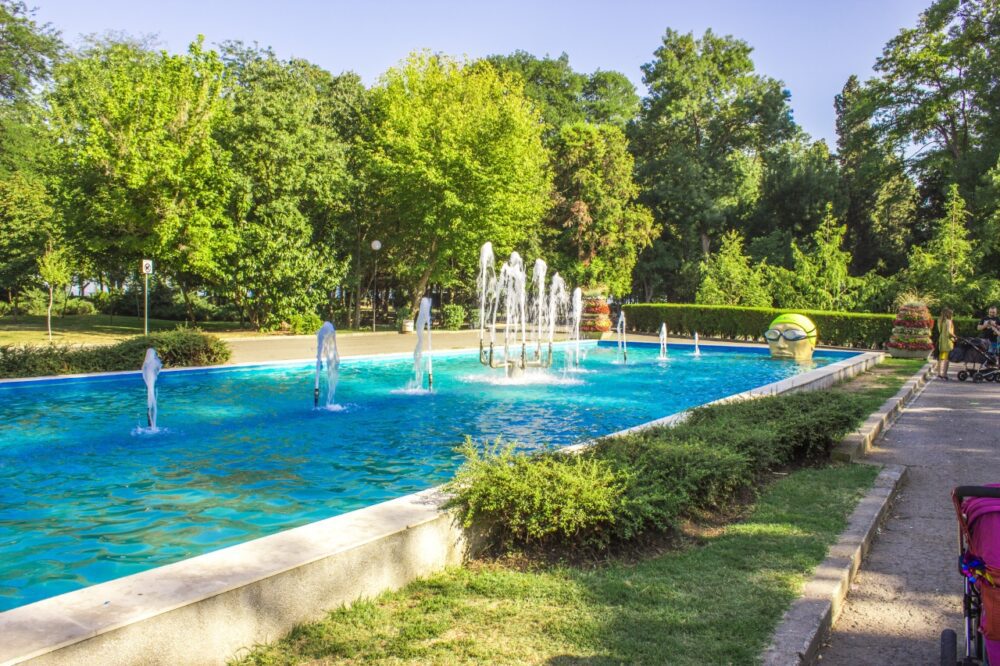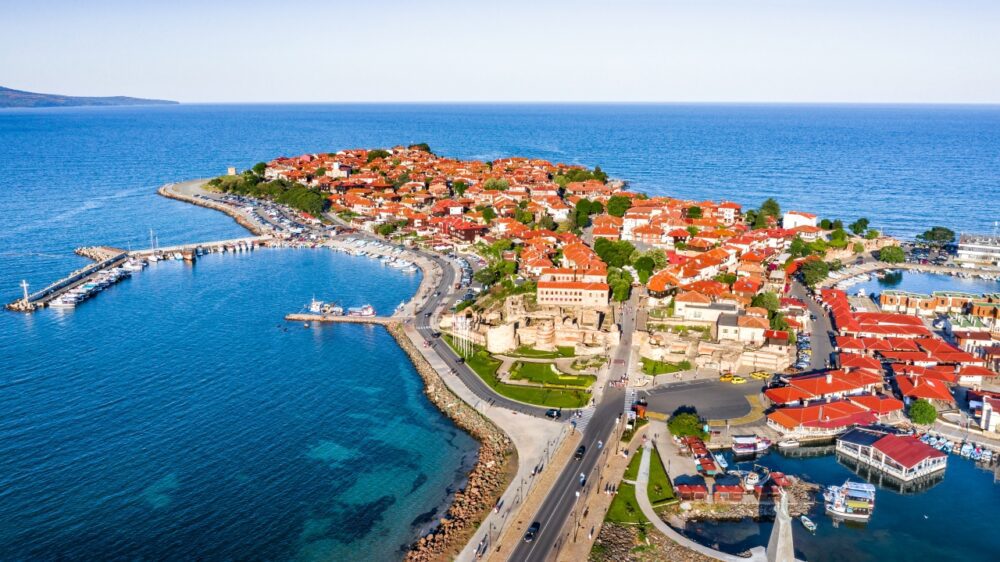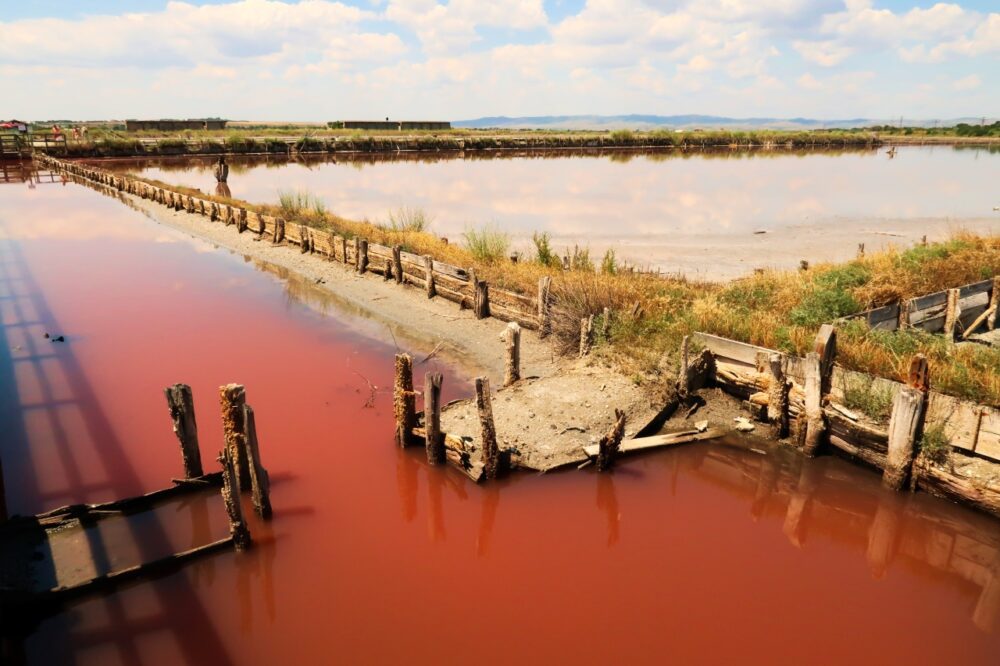
Burgas, a bustling coastal city on Bulgaria’s Black Sea, is an underrated gem with a mix of urban charm and seaside relaxation. Known for its spacious Sea Garden, lively cultural scene, and proximity to stunning beaches and nature reserves, Burgas offers something for every type of traveller. Whether you’re strolling along its scenic promenades, visiting the nearby UNESCO-listed Nessebar, or enjoying the laid-back vibe of Burgas’ city centre, there’s plenty to see and do. But with so many options along the Black Sea coast, you might wonder: is Burgas worth visiting? In this post, we’ll explore what makes Burgas special and help you decide if it’s the right destination for your trip.
Table of Contents
Pros – Reasons You Should Visit Burgas
1. A More Relaxed and Authentic Alternative to Bulgaria’s Resort Towns
Burgas is a coastal city that offers beautiful beaches and seaside charm without the overwhelming crowds and heavy commercialization found in Bulgaria’s major resort destinations like Sunny Beach. While it still attracts visitors, it feels more like a real, lived-in city rather than a place built entirely for tourism.
I appreciated how Burgas had a balance between being a functional city and a beach getaway. Locals went about their daily routines, small markets sold fresh produce, and there were plenty of local cafés that didn’t cater exclusively to tourists. If you want a seaside destination that still has a strong local character, Burgas is a great choice.
2. A Beautiful and Well-Maintained Seaside Park

Burgas is home to one of Bulgaria’s most impressive coastal parks, the Sea Garden. This long, green park stretches along the coastline and is the perfect place for a relaxing walk, a morning jog, or a quiet spot to enjoy the sea breeze. It features beautifully landscaped gardens, sculptures, fountains, and shaded walking paths, making it a favorite place for both locals and visitors.
I spent an afternoon wandering through the park, enjoying the peaceful atmosphere and stunning sea views. There were plenty of benches to sit and watch the waves, as well as small cafés where I could grab a coffee. Unlike some city parks that feel too manicured, the Sea Garden has a natural and inviting feel, making it a great place to escape the summer heat.
3. Wide, Sandy Beaches with Plenty of Space
Burgas has several excellent beaches with soft, golden sand and clean, shallow waters, making it an ideal spot for swimming and sunbathing. Unlike some of Bulgaria’s more famous beach destinations, the beaches in Burgas tend to be less crowded, even in peak season, meaning there’s more space to relax.
I visited the central beach near the Sea Garden, and while there were people enjoying the sun, it never felt too packed. The sand was soft, and the shallow waters made it perfect for a refreshing swim. For those looking for a quieter experience, there are more secluded beaches just outside the city, such as the ones near Pomorie and Kraimorie.
4. A Well-Connected Base for Exploring the Bulgarian Coast

Burgas is one of the best places to base yourself if you want to explore other parts of Bulgaria’s Black Sea coast. The city has excellent transport connections, with regular buses and trains to destinations like Sozopol, Nessebar, and Sunny Beach, as well as ferry services to some of the nearby islands.
I used Burgas as my starting point for visiting the ancient town of Nessebar, which was only an hour away by bus. It was great to have a lively city to return to in the evening while still being able to take day trips to smaller coastal towns and historical sites. If you enjoy exploring different locations without constantly changing hotels, Burgas is a great hub.
5. A Growing Food Scene with Fresh Seafood and Traditional Bulgarian Dishes
Burgas has a fantastic food scene, especially for those who love fresh seafood. The city’s coastal location means that fish, mussels, and shrimp are served in most restaurants, often grilled or cooked in traditional Bulgarian styles. In addition to seafood, Burgas offers excellent traditional Bulgarian cuisine, with dishes like shopska salad, kavarma (a slow-cooked meat stew), and banitsa (a flaky cheese pastry) available at local taverns.
One of the best meals I had in Burgas was a plate of freshly grilled fish, served with roasted vegetables and a glass of Bulgarian white wine. The seafood was incredibly fresh, and the portion sizes were generous. Unlike some tourist-heavy towns where restaurants overcharge, I found the food in Burgas to be reasonably priced, with great quality ingredients.
6. A Lively Cultural Scene with Festivals and Events
Burgas has a surprisingly vibrant cultural scene, with festivals, concerts, and open-air events happening throughout the year. The Sand Sculpture Festival, held every summer, features large, intricate sand sculptures created by artists from around the world, while the Spirit of Burgas music festival has attracted international acts in the past.
I visited during the Sand Sculpture Festival, and it was incredible to see the detailed and creative sculptures, many of which depicted famous landmarks, animals, and mythical creatures. Even outside of festival season, Burgas has plenty of cultural venues, including art galleries, theaters, and music events, making it a dynamic city with more to offer than just beaches.
7. A More Affordable Alternative to Other Coastal Cities
Compared to Bulgaria’s more famous beach towns like Varna and Sunny Beach, Burgas is noticeably more affordable. Accommodation, restaurants, and activities tend to be cheaper, making it an excellent option for travelers who want a beach holiday without breaking the bank.
I was surprised at how reasonably priced everything was in Burgas, especially compared to other European seaside destinations. A great meal at a nice restaurant cost far less than in Western Europe, and even beachfront accommodations were affordable. If you’re looking for a high-quality yet budget-friendly coastal city, Burgas is one of the best options on the Black Sea.
8. Unique Natural Attractions Nearby

Just outside Burgas, there are several incredible natural attractions that are perfect for nature lovers. The Burgas Lakes, a group of large coastal lakes, are home to diverse bird species, including pelicans and flamingos, making them a great spot for birdwatching. Another unique site is the Atanasovsko Lake, famous for its pink-colored waters, caused by the high salt content and special microorganisms.
I took a short trip to Atanasovsko Lake and was amazed by the vibrant pink water—it felt like something out of a dream. The lake also has natural mud baths, which locals believe have healing properties. It’s rare to find such unique natural sites so close to a major city, making Burgas even more appealing for those who love outdoor exploration.
9. Friendly and Welcoming Locals
Bulgarians in general are known for their hospitality, and Burgas is no exception. The locals are friendly, welcoming, and happy to help visitors, even if not everyone speaks fluent English. The city has a laid-back vibe, and the people seem genuinely proud of their home, eager to share their recommendations with travelers.
At a small family-run restaurant, the owner took the time to explain the menu to me and even offered a free sample of homemade rakia, a strong Bulgarian fruit brandy. It was a simple but memorable moment that made me feel welcome in the city. If you enjoy destinations where locals are warm and helpful, Burgas is a great choice.
10. A Laid-Back Atmosphere That’s Perfect for Relaxation
One of Burgas’s biggest strengths is its relaxed and unhurried atmosphere. While it has a lively energy in the summer, it never feels overwhelming or chaotic. The combination of the beach, the Sea Garden, and the city’s walkable streets makes it a perfect place to unwind.
I found Burgas to be one of the most stress-free cities I visited on the Black Sea coast. Whether sitting in a café watching the waves, strolling through the park, or enjoying a quiet evening by the beach, everything felt peaceful and easygoing. If you’re looking for a coastal city where you can truly relax, Burgas is an excellent destination.
Cons – Things to Consider When Visiting Burgas
1. The Beaches Near the City Are Not the Best on the Black Sea
While Burgas has several beaches, they are not as picturesque as some of the more famous Black Sea destinations like Golden Sands or Sozopol. The sand is darker in color, and while the water is generally clean, it doesn’t always have the crystal-clear quality you might expect from a beach holiday destination. The beaches near the city center can also get crowded during peak season, making them feel less relaxing.
I spent a day at the main Burgas beach and found it enjoyable but not particularly stunning. The sand was a bit coarse compared to other beaches I had visited in Bulgaria, and the water, while warm, wasn’t as clear as I had hoped. If you’re looking for the most scenic beaches, you might be better off taking a short trip to nearby Sozopol, Nessebar, or the quieter beaches near Sinemorets, which offer more natural beauty and fewer crowds.
2. The City Lacks Major Historical Landmarks
Burgas is a pleasant city with a great seaside atmosphere, but it doesn’t have the same historical depth or iconic landmarks as other Bulgarian destinations like Plovdiv, Veliko Tarnovo, or Nessebar. While there are museums and cultural sites, visitors who enjoy exploring ancient ruins or significant historical buildings may find that Burgas lacks a “must-see” historical attraction.
I enjoyed walking through the city center and visiting some of the smaller museums, but I noticed that Burgas didn’t have the same level of architectural grandeur or centuries-old buildings that I had seen elsewhere in Bulgaria. If you’re someone who prioritizes history and sightseeing over beaches and relaxation, you might find Burgas a little underwhelming.
3. Some Areas Feel Worn Down and Less Maintained
While the central parts of Burgas, especially around the Sea Garden and pedestrian streets, are well-kept, some of the outer neighborhoods and less touristy areas feel a bit neglected. Certain parts of the city still have older Soviet-style apartment blocks that can appear dull and uninviting, and some streets have cracked sidewalks or graffiti-covered buildings.
I noticed this when I wandered beyond the main tourist areas—while it didn’t make the city feel unsafe, it did create a noticeable contrast between the well-maintained sections and the areas that looked like they hadn’t been updated in decades. While this is common in many post-Soviet cities, travelers expecting a fully polished and picturesque coastal town might find these contrasts surprising.
4. The Weather Can Be Unpredictable, Especially in Early Summer
Burgas has a generally pleasant coastal climate, but the weather can sometimes be unpredictable, especially in late spring and early summer. Sudden rain showers, cooler-than-expected temperatures, or strong winds can occasionally disrupt beach plans. While the summers are mostly warm and sunny, the city does experience the occasional storm, which can make outdoor activities less enjoyable.
I visited in early June and was surprised by how quickly the weather changed. One moment, the sun was shining, and within an hour, dark clouds had rolled in, followed by a heavy downpour. The rain didn’t last long, but it was enough to cut my beach day short. If you’re planning a trip, it’s best to check the forecast and have some backup indoor activities planned in case the weather turns.
5. Limited Nightlife Compared to Other Coastal Destinations
While Burgas has a decent selection of bars, restaurants, and live music venues, it doesn’t have the same vibrant nightlife scene as places like Sunny Beach or Varna. There are some beach bars and nightclubs, but the overall nightlife is more relaxed, catering more to locals than to the high-energy tourist party crowd. If you’re looking for all-night beach parties and a buzzing club scene, Burgas may not be the best fit.
I went out for drinks one evening and found that while there were some nice spots to enjoy a cocktail or listen to live music, the nightlife was fairly low-key. Many bars closed earlier than expected, and the overall energy was more laid-back than in other coastal cities. For those who prefer a more relaxed evening scene, this might be a plus, but for travelers looking for a party destination, Burgas is quieter in comparison.
When to Visit Burgas
The best times to visit Burgas are late spring (May to June) and early autumn (September to October). These months offer warm weather, fewer crowds, and a relaxed atmosphere, perfect for exploring the city’s parks and coastline. July and August are ideal for beach lovers, with hot summer days and a lively vibe, though they attract the most visitors. Winter (December to February) is quieter, with mild temperatures and an opportunity to enjoy Burgas’s cultural attractions in a more tranquil setting.
How to Get to Burgas
Burgas is served by Burgas Airport (BOJ), located just 10 kilometres northeast of the city. The airport connects to major European cities through airlines like Wizz Air, Ryanair, and Bulgaria Air. From the airport, the No. 15 bus runs regularly to the city centre, while taxis and ride-hailing services are available for a faster but more expensive option. For domestic travel, Burgas is well-connected by train and bus to Sofia, Plovdiv, and Varna, with scenic routes along the coast and countryside.
Where to Stay in Burgas
Burgas has accommodation options for every traveller, whether you’re seeking luxury or budget-friendly stays:
- Luxury: Sea Garden or Beachfront Areas – Stay at Primoretz Grand Hotel & Spa, offering top-tier amenities and stunning sea views, or Hotel Bulgaria Burgas, a modern choice in the city centre.
- Mid-range: Near the Central Station or City Centre – Try Avenue Hotel, combining comfort with affordability, or Boutique Hotel Promenade, known for its style and location by the Sea Garden.
- Budget: Suburban Burgas or Guesthouses – Consider Guest House Fotinov, offering simple, budget-friendly rooms, or Hostel Burgas, a sociable option for backpackers.
Getting Around Burgas
Burgas is compact and easy to explore on foot, particularly the Sea Garden, city centre, and waterfront. The city’s public bus network is affordable and connects key attractions, including Burgas Salt Pans and the nearby beach resorts. Taxis are widely available, but it’s best to use a reputable company or ride-hailing app to avoid overpaying. Cycling is a popular way to explore the Sea Garden and surrounding areas, with bike rental stations readily available. For trips to nearby destinations like Sozopol or Nessebar, buses are convenient and inexpensive.
How Long to Spend in Burgas
Two to three days is perfect for exploring Burgas and its surroundings. Spend your first day strolling through the Sea Garden, relaxing on the beach, and visiting the Burgas Regional Historical Museum. Dedicate a second day to exploring nearby attractions, such as the charming old town of Sozopol or the UNESCO-listed Nessebar. With more time, take a boat trip to St. Anastasia Island or visit the Burgas Salt Pans for unique scenery and therapeutic mud baths. Burgas’s blend of nature, culture, and coastal charm makes it an excellent base for exploring the Black Sea region.
Conclusion
So, is Burgas worth visiting? Definitely! If you’re looking for a city that combines beach access, cultural attractions, and a relaxed atmosphere, Burgas is an excellent choice. Its central location makes it a great base for exploring the surrounding area, from ancient towns to nature reserves. While it’s less glitzy than some other Black Sea resorts, its authentic charm and diverse offerings make it a rewarding destination. For travellers seeking a balance of culture and seaside relaxation, Burgas is a city that’s well worth a visit.
